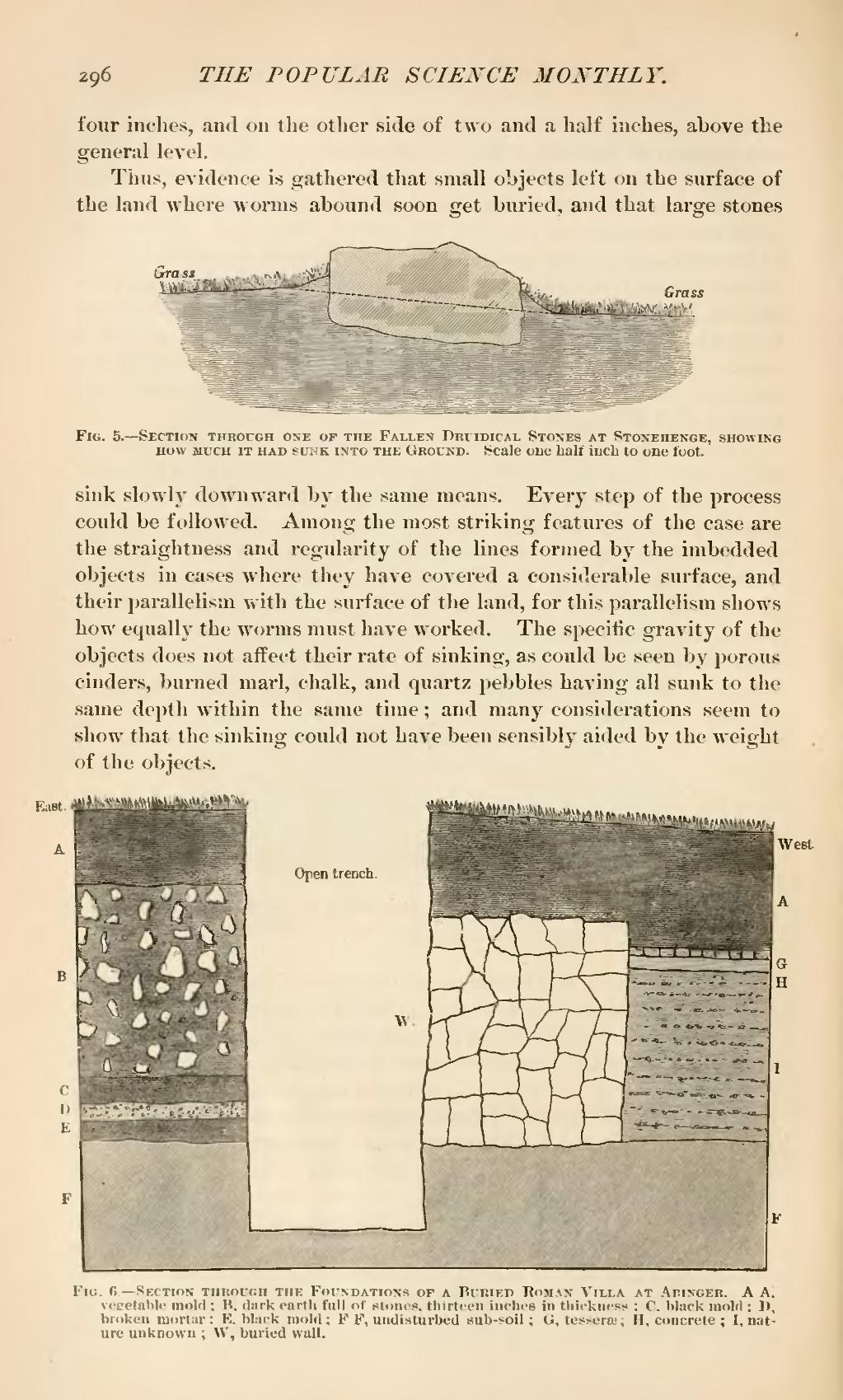four inches, and on the other side of two and a half inches, above the general level.
Thus, evidence is gathered that small objects left on the surface of the land where worms abound soon get buried, and that large stones

Fig. 5.—Section through one of the Fallen Druidical Stones at Stonehenge, showing how much it had sunk into the Ground. Scale one half inch to one foot.
sink slowly downward by the same means. Every step of the process could be followed. Among the most striking features of the case are the straightness and regularity of the lines formed by the imbedded objects in cases where they have covered a considerable surface, and their parallelism with the surface of the land, for this parallelism shows how equally the worms must have worked. The specific gravity of the objects does not affect their rate of sinking, as could be seen by porous cinders, burned marl, chalk, and quartz pebbles having all sunk to the same depth within the same time; and many considerations seem to show that the sinking could not have been sensibly aided by the weight of the objects.

Fig. 6.—Section through the Foundations of a Buried Roman Villa at Abinger. A A, vegetable mold: B, dark earth full of stones, thirteen inches in thickness: C. black mold: D, broken mortar: E, black mold: F F, undisturbed sub-soil; G, tesseræ: H, concrete: I, nature unknown: W, buried wall.
